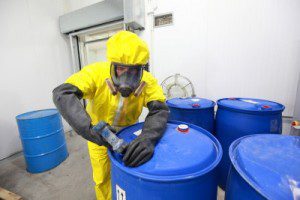13th April 2013
By Sayer Ji
Contributing writer for Wake Up World
As we reported on back in June of last year, in an exposé titled, Consumer Alert: BPA-Free Goods Still Contain Toxin Bisphenol, the petrochemical bisphenol A (BPA), a ubiquitous ingredient in thousands of consumer products and which has been linked to a wide range of serious adverse health effects,[i] has been removed by many ostensibly scrupulous manufacturers in favor of another equally toxic analog in the same chemical class, known as bisphenol S (BPS). This has enabled manufacturers of products as varied as thermal printer receipts to sippy cups to advertise their products as “BPA-free,” while still exposing consumers to potentially harmful, and less regulated chemicals.
[pro_ad_display_adzone id=”110028″]
BPS is actually not only within the same range of toxicity of BPA, but is slower to degrade, and therefore will be more likely to remain a persistent toxin and environmental pollutant.[ii] It has already been found to be present in the urine of 81% of those tested from the United States and seven Asian countries.[iii]
Now, new concern is being raised by a study published this month in the journal Environmental Health Perspectives showing that BPS has estrogenic activity comparable to estradiol, the most potent and therefore concerning human estrogen, and is even capable of enhancing estradiol-mediated cell signaling activity. These actions indicate it has great potential to disrupt normal endocrine processes. The study also found that BPS is capable of inducing cell death (apoptosis), as well as interfere with cellular prolactin (PRL) secretion. This latter effect has a broad range of indications, as the prolactin hormone regulates hundreds of biological functions, including metabolism, reproduction and lactation.[iv]
Taken together, the study authors concluded:
BPS, once considered a safe substitute for BPA, disrupts membrane-initiated E2-induced cell signaling, leading to altered cell proliferation, cell death, and PRL release.
Global Chemical Sleight-of-Hand: BPS Replaces BPA
In many ways, the sleight-of-hand substitution of Bisphenol S for Bisphenol A, is just business as normal. Pharmaceutical companies, for instance, will often begin to phase out a drug when after years of causing side effects and even deaths it begins to lose its viability as a profit center because of accumulating lawsuits and adverse post-marketing surveillance research, as well as the impending expiration of its patent exclusivity. So, they simply alter the synthetic drug an atom or two, and reapply for a “new and improved” drug approval – even when, essentially, less is known about its toxicity; until, that is, the end users (a living guinea pig) experience convincing bodily evidence that it does more harm than good.
Sadly, chemicals like bisphenols receive far less regulatory oversight than pharmaceuticals, despite the fact that exposure to pharmacologically active chemicals in everyday consumer products can be much more widespread.
The extent to which manufacturers have replaced BPA with BPS is unknown, but a 2012 study published in the journal Environmental Science and Technology titled “Bisphenol S, a New Bisphenol Analogue, in Paper Products and Currency Bills and Its Association with Bisphenol A Residues,” indicates the shift is global, and therefore likely internally coordinated by the chemical industry:
As the evidence of the toxic effects of bisphenol A (BPA) grows, its application in commercial products is gradually being replaced with other related compounds, such as bisphenol S (BPS). Nevertheless, very little is known about the occurrence of BPS in the environment. In this study, BPS was analyzed in 16 types of paper and paper products (n = 268), including thermal receipts, paper currencies, flyers, magazines, newspapers, food contact papers, airplane luggage tags, printing paper, kitchen rolls (i.e., paper towels), and toilet paper. All thermal receipt paper samples (n = 111) contained BPS at concentrations ranging from 0.0000138 to 22.0 mg/g (geometric mean: 0.181 mg/g). The overall mean concentrations of BPS in thermal receipt papers were similar to the concentrations reported earlier for BPA in the same set of samples. A significant negative correlation existed between BPS and BPA concentrations in thermal receipt paper samples (r = -0.55, p<0.0001). BPS was detected in 87% of currency bill samples (n = 52) from 21 countries, at concentrations ranging from below the limit of quantification (LOQ) to 6.26μg/g (geometric mean: 0.029 μg/g). BPS also was found in 14 other paper product types (n = 105), at concentrations ranging from88%). To our knowledge, this is the first report on the occurrence of BPS in paper products and currency bills.
Because the research on bisphenol A toxicity is far more extensive than bisphenol S, a number of natural substances have already been found to degrade bisphenol A the body. We may assume that other toxic bisphenols could be degraded, blocks and/or detoxified from the body by similar mechanisms.
These beneficial substances include
- Probiotics: Bifodobacterium breve and Lactobacillus casei, two commonly used strains in supplements, has been found to reduce the intestinal absorption of bisphenol A by facilitating its excretion.[v] Kimchi, a Korean fermented cabbage food, contains probiotics that have been found to degrade bisphenol A.[vi] [See also: Probiotics Destroy Toxic Chemicals in Our Gut For Us]
- Folic Acid: This methyl donor vitamin is capable of silencing genes (epigenetically) that when over-expressed can lead to diseases such as cancer. Maternal nutrient supplementation with folic acid has been found to counteract bisphenol A-induced DNA hypomethylation (low methylation) in early development. [vii] Keep in mind that whenever possible use folate, the natural form of folic acid, as it has not been linked to adverse health effects.
- Black Tea and Quercetin: Cell research has found that black tea extract and quercetin (found in high concentrations in onion) ameliorate bisphenol A-induced cell toxicity.[viii]
- Royal Jelly: Royal jelly is a bee product that has been found to inhibit the estrogenic and proliferative effects of bisphenol-A.[ix]
While this is a limited list, it provides a clue into how we might naturally combat exposures to xenobiotic chemicals such as bisphenols through our diet. Organically produced, minimally processed, and especially traditionally cultured foods likely provide a broad range of protective actions against chemical exposures, the benefits of which we may obtain on a daily basis through our dietary choices. We don’t have to wait around for more clinical research to prove what commonsense already knows: avoid chemical exposures and eat well, whenever possible.
Article Resources
- [i] GreenMedInfo.com, Bisphenol Toxicity Research
- [ii] Erica Danzl, Kazunari Sei, Satoshi Soda, Michihiko Ike, Masanori Fujita. Biodegradation of bisphenol A, bisphenol F and bisphenol S in seawater. Int J Environ Res Public Health. 2009 Apr ;6(4):1472-84. Epub 2009 Apr 17. PMID: 19440529
- [iii] Chunyang Liao, Fang Liu, Husam Alomirah, Vu Duc Loi, Mustafa Ali Mohd, Hyo-Bang Moon, Haruhiko Nakata, Kurunthachalam Kannan. Bisphenol S in Urine from the United States and Seven Asian Countries: Occurrence and Human Exposures. Environ Sci Technol. 2012 May 23. Epub 2012 May 23. PMID: 22620267
- [iv] Julia R Barrett. Assessing the safety of a replacement chemical: nongenomic activity of bisphenol s. Environ Health Perspect. 2013 Mar 1 ;121(3):a97. PMID: 23454847
- [v] Kenji Oishi, Tadashi Sato, Wakae Yokoi, Yasuto Yoshida, Masahiko Ito, Haruji Sawada. Effect of probiotics, Bifidobacterium breve and Lactobacillus casei, on bisphenol A exposure in rats. Biosci Biotechnol Biochem. 2008 Jun;72(6):1409-15. Epub 2008 Jun 7. PMID: 18540113
- [vi] Hayato Yamanaka, Kunihiko Moriyoshi, Takashi Ohmoto, Tatsuhiko Ohe, Kiyofumi Sakai.Degradation of bisphenol A by Bacillus pumilus isolated from kimchi, a traditionally fermented food. Appl Biochem Biotechnol. 2007 Jan;136(1):39-51. PMID: 17416976
- [vii] Dana C Dolinoy, Dale Huang, Randy L Jirtle. Maternal nutrient supplementation counteracts bisphenol A-induced DNA hypomethylation in early development. Proc Natl Acad Sci U S A. 2007 Aug 7;104(32):13056-61. Epub 2007 : PMID: 17670942
- [viii] Ramtej J Verma, Neha P Sangai. The ameliorative effect of black tea extract and quercetin on bisphenol A-induced cytotoxicity. Acta Pol Pharm. 2009 Jan-Feb;66(1):41-4. PMID: 19226967
- [ix] Mako Nakaya, Hiroyuki Onda, Kyoko Sasaki, Akiko Yukiyoshi, Hirofumi Tachibana, Koji Yamada. Effect of royal jelly on bisphenol A-induced proliferation of human breast cancer cells. Biosci Biotechnol Biochem. 2007 Jan;71(1):253-5. Epub 2007 Jan 7. PMID:17213647
Recent articles by Sayer Ji
- The Evidence-Based Healing Properties of 13 Common Fruits
- Dental Composites for Kids: Even Worse Than Mercury Amalgam?
- 13 Evidence-Based Medicinal Properties of Coconut Oil
- Five Amazing Healing Honey Facts
- Is This Fruit Extract 10,000 Times Better Than Chemotherapy?
Sayer Ji is the founder and director of GreenMedInfo.com and an advisory board member at the National Health Federation, an international nonprofit, consumer-education, health-freedom organization. He co-authored the book Cancer Killers: The Cause Is The Cure, and is working on another one with Tania Melkonian titled EATomology: An Edible Philosophy of Food.
[pro_ad_display_adzone id=”110027″]








